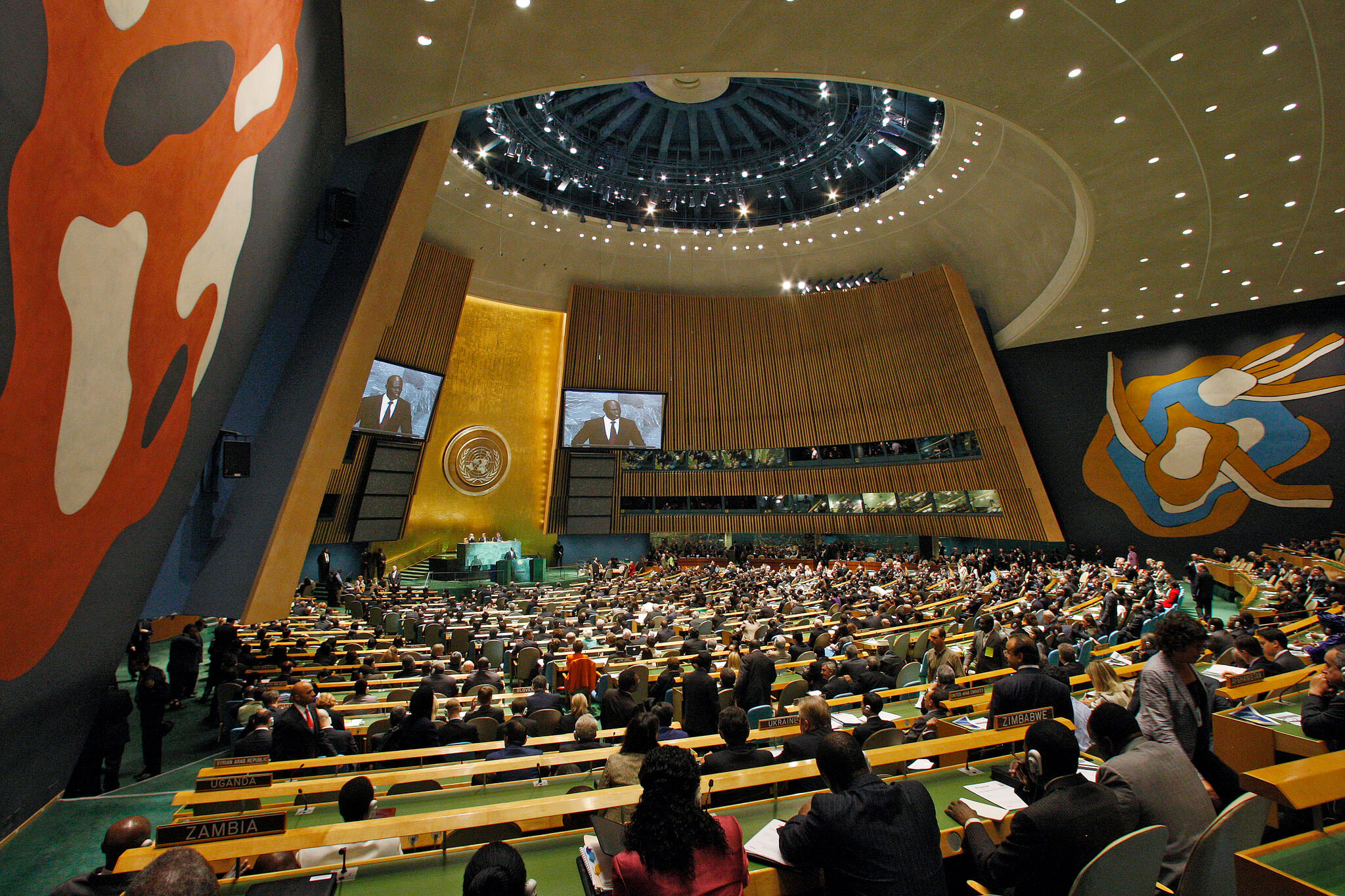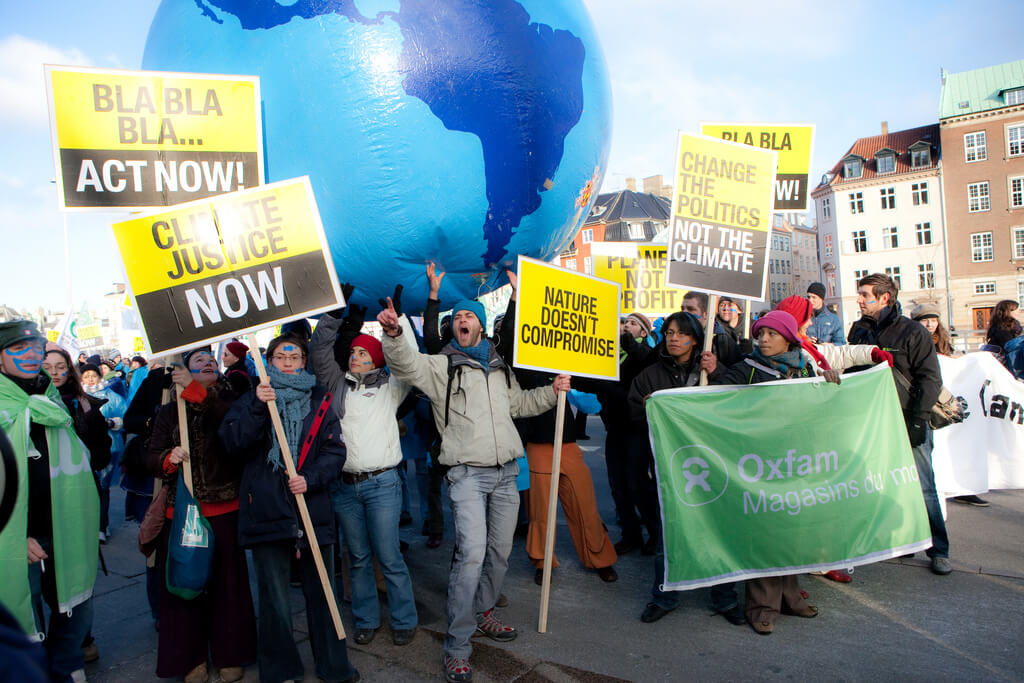
Climate finance: All that glitters is not gold
Last week, the most recent report of the scientific Intergovernmental Panel on Climate Change was published. The report serves as a preparation for the next climate conference that will take place in Katowice, Poland, in December of this year. One of the important themes on the agenda of that conference will be, once more, climate finance. Nine years after the climate talks in Copenhagen, Denmark, developed countries still struggle to determine what their pledge at that conference - to mobilise climate finance for developing countries - really means.
The promise made in Copenhagen was to mobilise the tremendous amount of $100 billion per year by 2020. Since then a lot has happened. Currently, according to an OECD (Organisation for Economic Cooperation and Development) methodology, a large part of this money has already been reserved: the most recent estimate was that in 2015 some $65 billion of ‘climate finance’ had been reserved for spending1 . But there are still some important issues to resolve. On top of the ongoing discussions on the accounting methodology, the underlying principles of these statistics are still subject to debate. Two topics stand out in particular: is climate finance really financing the most appropriate climate actions; and is climate finance building upon development finance instead of replacing it, as was promised in the Copenhagen agreement?
Is climate finance really leading to appropriate climate actions?
In order to reserve $100 billion of climate finance, it should be crystal clear what is meant by ‘climate finance’ in the first place. However, up until now there is no clear definition of this term. Instead two common working approaches to defining climate finance have been developed: the OECD Rio markers and the development banks’ list of mitigation technologies.
The Rio markers were never meant to be used in a quantative way in an accounting system, and can therefore lead to a large overestimation of climate finance
Since 1998, the OECD has monitored the provision of climate aid with the so-called ‘Rio markers’. The Rio markers make a distinction between activities that have climate aid as a principal objective (counted as 100% climate finance) and activities that take climate change into account, but have other principal objectives (40% or 50% climate finance). These markers provide a simple tool to account for climate finance by donor countries: contributions are either ‘principal’ or ‘significant’.
Unfortunately the reality of climate finance is less black and white. The Rio markers were never meant to be used in a quantitative way in an accounting system, and can therefore lead to a large overestimation of climate finance. For instance, building a hospital for $5 million and adding ten solar PV panels for $5,000 to the roof allows for a 40% accounting of ‘climate finance’. Hence, in this example $2 million could be added to the statistics to reach the $100 billion goal. Similarly, a $10 million project to expand agricultural production that also uses improved irrigation techniques (saving water in a drought-affected area for $500K) can account for $4 million as climate adaptation finance.

Another approach, widely taken by development banks, is a restrictive list of ‘climate mitigation’ technologies. If you invest in one of these technologies, only the climate-relevant investment can be accounted for as climate finance. In this approach, the climate-relevant part of the investment has to be specified exactly. It is therefore much more specific than the Rio marker approach. But also this approach has important drawbacks. The ‘restrictive list approach’ has no clear means to define ‘adaptation finance’. Furthermore, traditional World Bank investments where the climate objective is only minor (like infrastructure for trains or metros) are on the list. They make up more than a quarter of the climate finance accounted for.
Accounting rules of climate finance are more lenient towards donors than development aid accounting rules are
Most importantly, however, is that neither of the two approaches are measuring the real impacts of the actions that are initiated. The reported amounts of climate finance do not give any information whatsoever on the levels of CO2 emissions that have been reduced in actuality. Nor do they demonstrate how much more resilient communities have become against the impacts of climate change, as a result of financial aid. Without such links between climate investments and their impacts, it remains unclear if the initiated climate actions indeed benefit the climate, and to what extent.
Is climate finance additional to development finance?
In Copenhagen it was agreed that the $100 billion of climate finance was to be ‘new and additional’. In practice, the $100 billion is not only about ‘giving’ money (grants), but also includes loans from governments, banks, and investments from the private sector. This is explicitly mentioned in the pledge: the finance will be mobilised “from a wide variety of sources, instruments and channels”2
. The Oxfam ‘Climate Finance Shadow Report’ mentions that overall increases in climate finance appear to be in fact largely the result of an upsurge in loans, in particular to middle-income countries3
. What further remains unmentioned in the pledge is that a part of climate finance is in practice only a relabeling of official development assistance (ODA) budgets. Oxfam states that most climate finance in 2015-2016 in fact is ODA4
, and – the other way round - climate finance takes an increasing share of the total global ODA budget (21% and growing)5
. Yet, and surprisingly, there seems to be hardly any international debate on this point.

On top of that, accounting rules of climate finance are more lenient towards donors than development aid accounting rules are. For example, in development finance a loan is only partly reported as a contribution to the total of a donor’s development aid6 . Contrarily, in climate finance the full 100% of the loan is reported, and repayments on the loan are not being deducted. Counting grant-equivalents only, the reported public climate finance in 2015-16 would be reduced from $48 billion to $16-21 billion7 . Also, guarantees from developed countries to support their own industry in developing countries are calculated much more favourably for donors under climate finance, than under development finance8 . For instance, if a government supports its dredging companies that are in competition with those in other countries with an export guarantee, it can report the guaranteed investment as climate finance, without any real spending. The shift from development finance to climate finance in this way becomes rather dubious in several ways.
Conclusions
From this discussion it becomes clear that all that glitters is not gold in the world of climate finance. Official accounting towards achieving the goal of $100 billion climate finance is very optimistic, but in reality it is less clear to what extent receiving countries and the climate really benefit from this money. For reasons of climate justice, donor countries would need to pay a fair share for the climate damage that they caused with some 150 years of fossil-fuelled industrial development. Furthermore, developing countries would need to be stimulated with this money to build their own economy in a sustainable way. It seems self-evident that the impacts of such a large amount of money spent should be monitored more closely. Better accounting methods and guarantees for a true additionality of climate finance to development aid will therefore be an important result to obtain in Katowice.
The authors are working for the environmental consultancy Trinomics BV in Rotterdam
- 1OECD (2015), Climate Finance in 2013-14 and the USD 100 billion Goal: A Report by the OECD in Collaboration with Climate Policy Initiative
- 2Article 9(3) of the Paris Agreement
- 3Oxfam (2018) The Climate Finance Shadow Report 2018
- 4OECD (2015), Climate Finance in 2013-2014 and the USD 100 billion Goal: A Report by the OECD in Collaboration with Climate Policy Initiative
- 5Oxfam (2018) ibid
- 6OECD (2016) DAC High Level Meeting Communiqué, Annex I, Article A(iv)
- 7Oxfam (2018) ibid.
- 8OECD (2016) ibid, Article C(xii)








0 Reacties
Reactie toevoegen